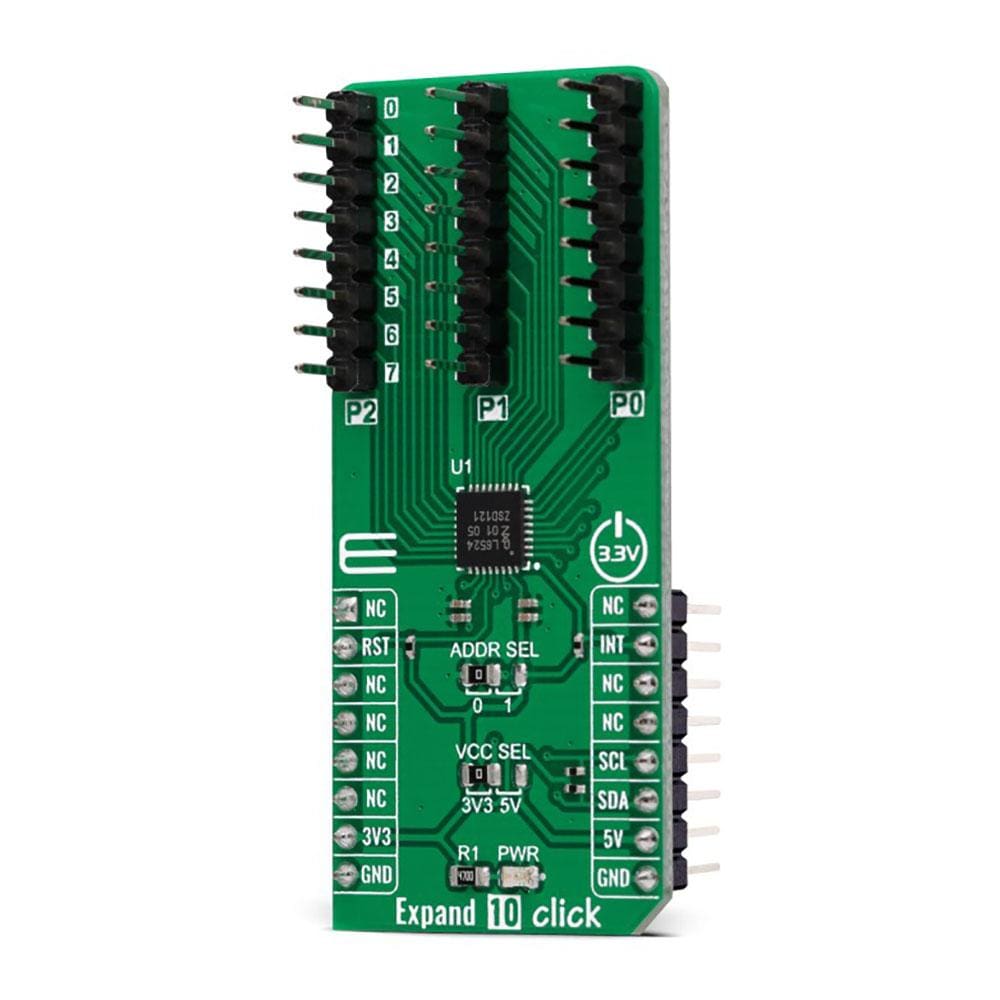
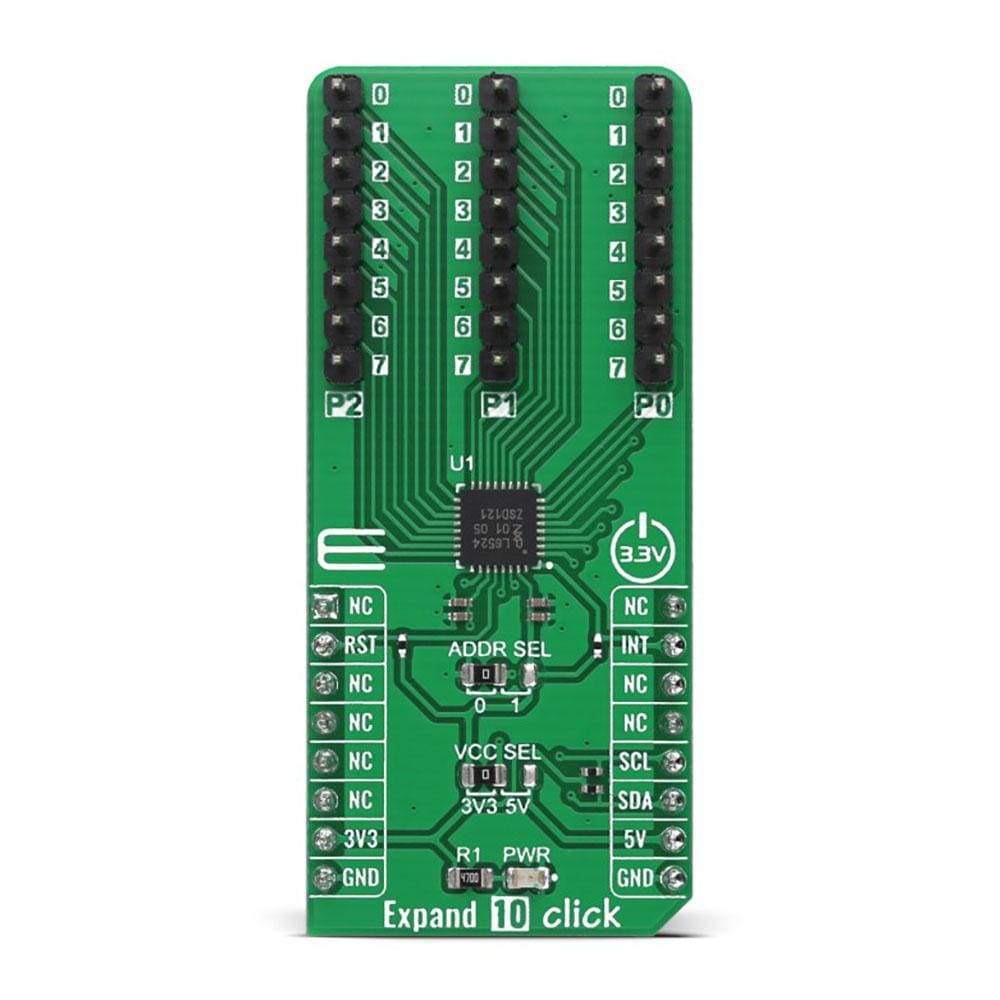
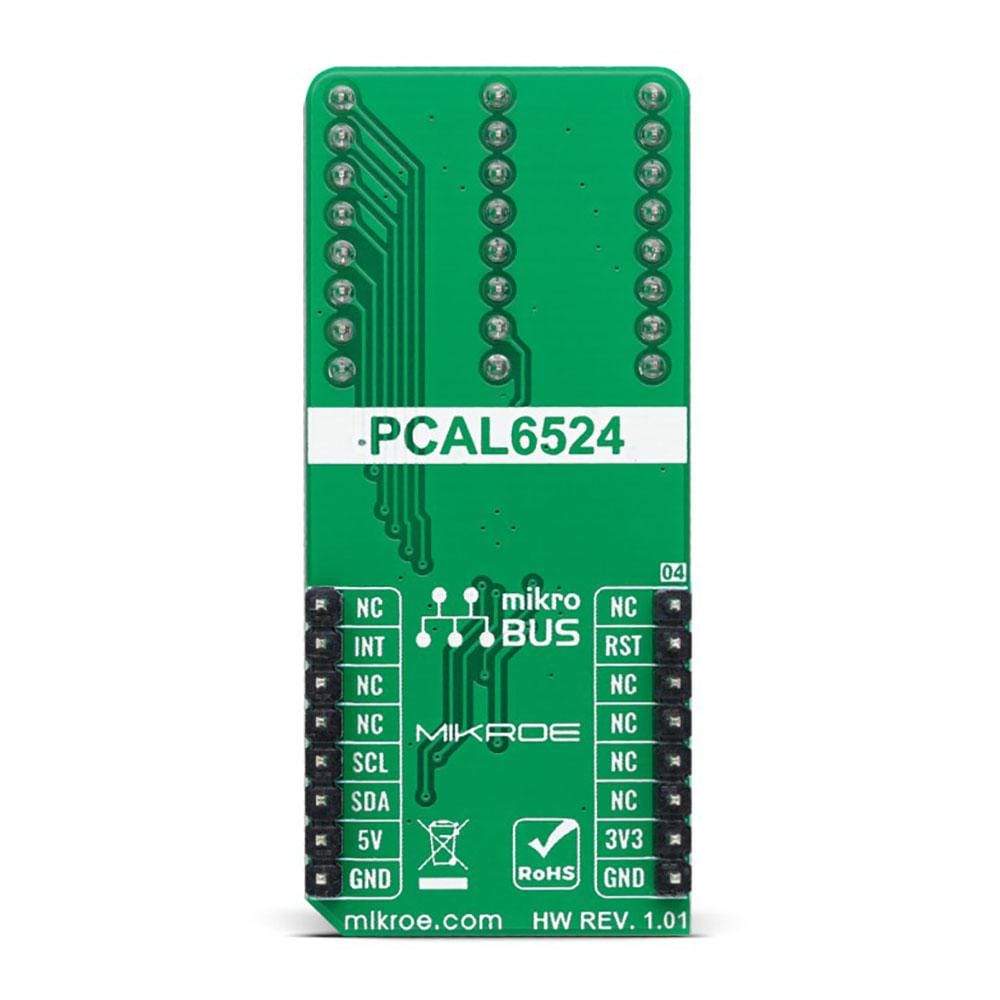
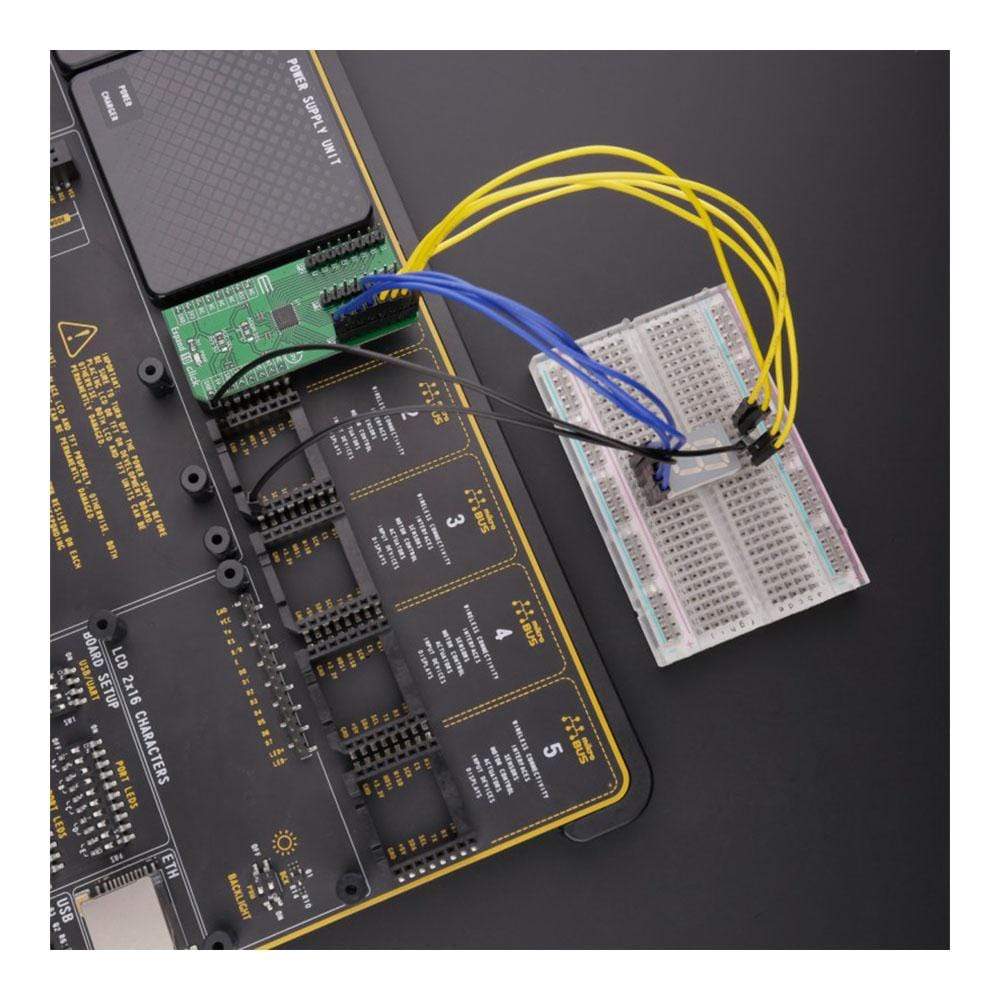
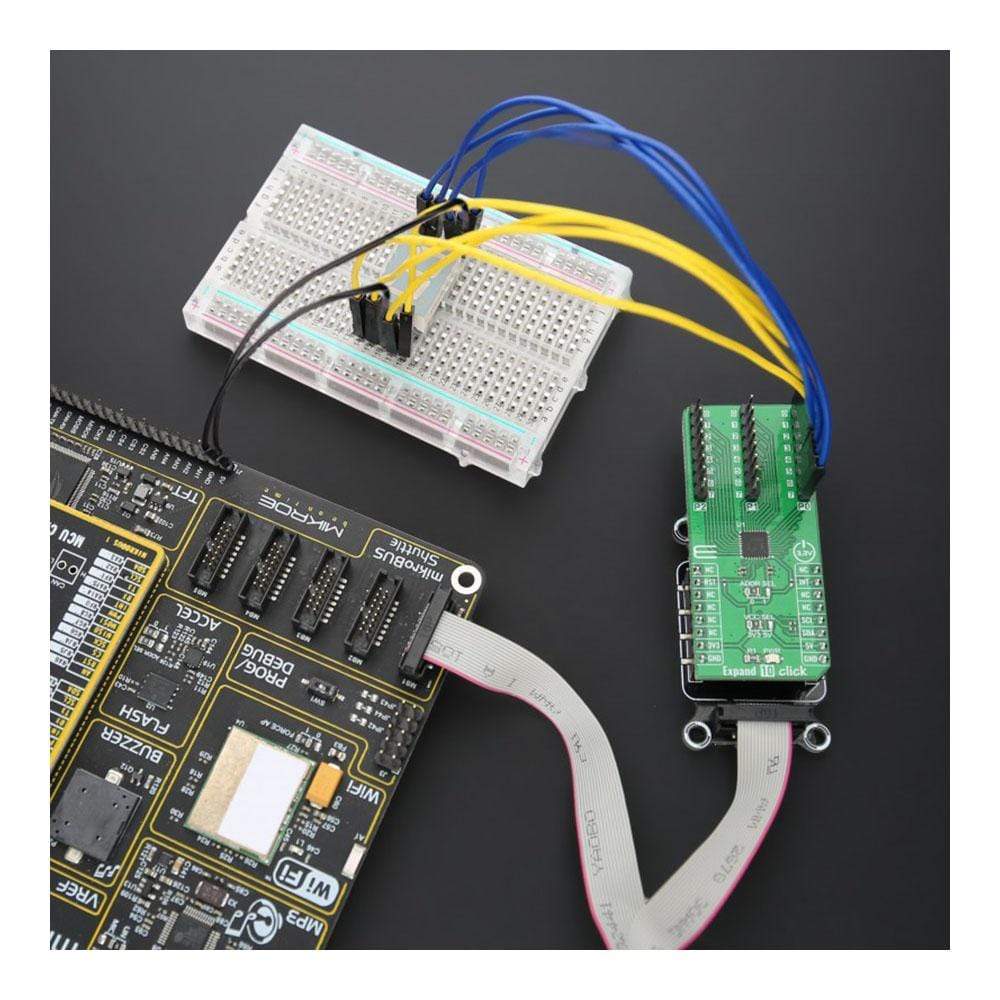
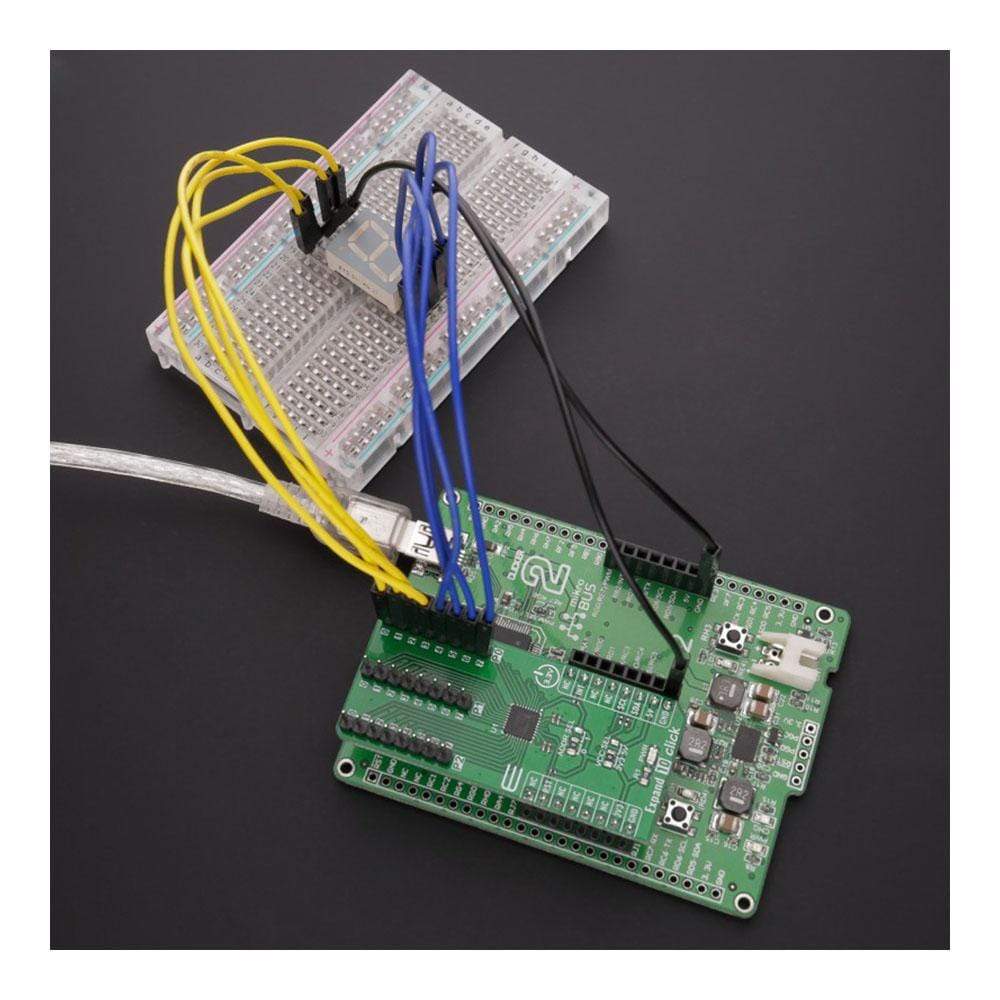
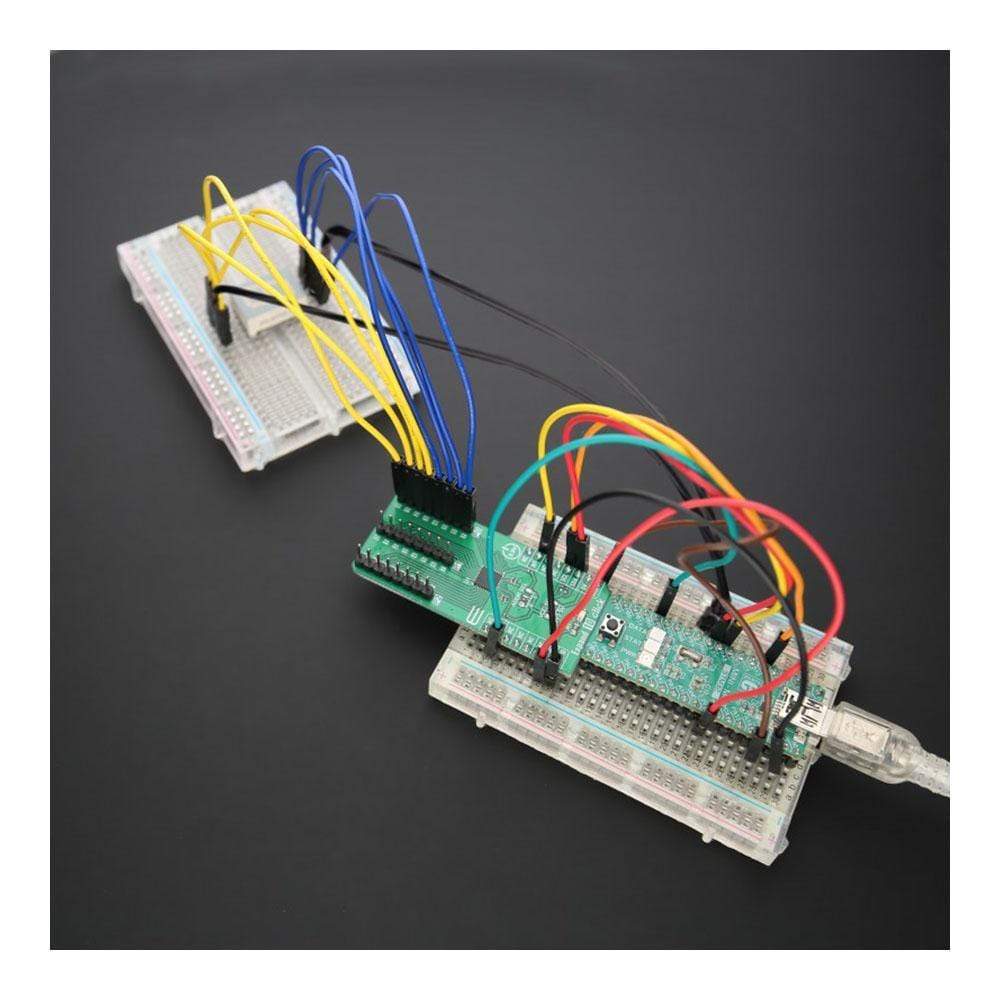
Key Features
Overview
The Expand 10 Click Board™ is a compact add-on board that contains a multi-port I/O expander. The board features the PCAL6524, a 24-bit general-purpose I/O expander providing remote I/O expansion for most MCU’s families via the Fast-mode Plus I2C-serial interface from NXP Semiconductors. The PCAL6524 has a built-in level shifting feature that makes it highly flexible in power supply systems where communication between incompatible I/O voltages is required. It allows seamless communications with next-generation low voltage microprocessors and microcontrollers on the interface and peripherals at a higher voltage on the port side. This Click Board™ provides a simple solution when additional I/Os are needed while keeping interconnections to a minimum in system monitoring applications, industrial controllers, portable equipment, and many more.
The Expand 10 Click Board™ is supported by a mikroSDK compliant library, which includes functions that simplify software development. This Click Board™ comes as a fully tested product, ready to be used on a system equipped with the mikroBUS™ socket.
Downloads
Le Développez 10 Click Board™ est une carte complémentaire compacte qui contient un extenseur d'E/S multiport. La carte comprend le PCAL6524, un extenseur d'E/S à usage général 24 bits offrant une extension d'E/S à distance pour la plupart des familles de microcontrôleurs via l'interface série Fast-mode Plus I2C de NXP Semiconductors. Le PCAL6524 dispose d'une fonction de décalage de niveau intégrée qui le rend très flexible dans les systèmes d'alimentation où une communication entre des tensions d'E/S incompatibles est requise. Il permet des communications transparentes avec les microprocesseurs et microcontrôleurs basse tension de nouvelle génération sur l'interface et les périphériques à une tension plus élevée côté port. Cette Click Board™ fournit une solution simple lorsque des E/S supplémentaires sont nécessaires tout en réduisant les interconnexions au minimum dans les applications de surveillance du système, les contrôleurs industriels, les équipements portables et bien d'autres.
Le tableau à clic Expand 10™ est pris en charge par une bibliothèque compatible mikroSDK, qui comprend des fonctions qui simplifient le développement logiciel. Cette Click Board™ est un produit entièrement testé, prêt à être utilisé sur un système équipé du socket mikroBUS™.
| General Information | |
|---|---|
Part Number (SKU) |
MIKROE-4801
|
Manufacturer |
|
| Physical and Mechanical | |
Weight |
0.02 kg
|
| Other | |
Country of Origin |
|
HS Code Customs Tariff code
|
|
EAN |
8606027383786
|
Warranty |
|
Frequently Asked Questions
Have a Question?
Be the first to ask a question about this.







